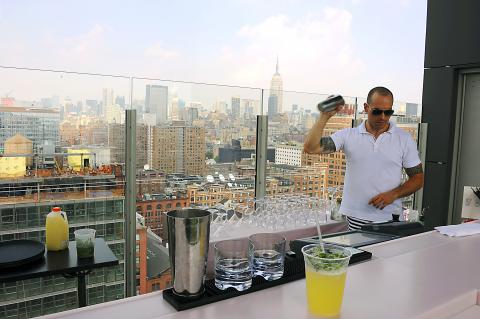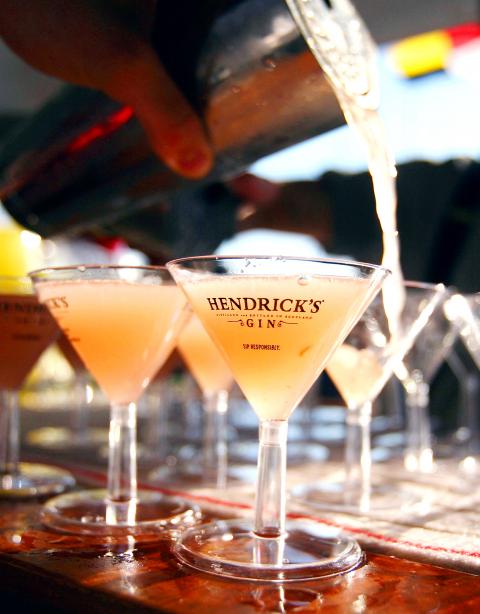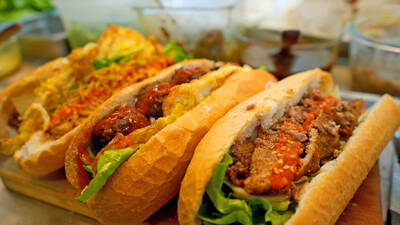“When we first started Varnish, we began sustaining a bunch of injuries,” Marcos Tello said. “I had a huge, constant knot in my forearm. Chris Ojeda developed tennis elbow. Matty Eggleston popped a tendon in his hand. We were all sidelined with all these injuries.”
Varnish is not a football team. It is a stylish, speakeasy-style cocktail bar that opened early last year in downtown Los Angeles. And the men Tello mentions are fellow bartenders, ranging in age from their mid-20s to mid-30s. But in these heady days of behind-the-bar showmanship, when theatrical agitations of shakers filled with heavy-duty ice are becoming the norm, the mixologist’s physical lot is not so terribly far removed from an athlete’s.
“When they’re shaking a drink, it’s very similar to the motion of a pitcher, or a tennis serve or throwing a football,” said Lisa Raymond-Tolan, an occupational therapist in New York. “It’s the same motion, back and forth, back and forth, rotating up high. You have a heavy weight at the end of the arm, out in the air. It’s not just the shoulder. It’s the wrist as well.”

Photo: Bloomberg
One of the bartenders at Varnish, Chris Bostick, shook his cocktails so vigorously that he ripped out the screws that had been inserted in his clavicle after a snowboarding injury. He was sidelined for weeks.
Bartending has never been an easy job. But in the past, tired feet, an aching back and possibly a bent ear or two were the standard complaints. Today’s nonstop bar-side ballets have caused the pains to creep northward to the wrist, elbow and shoulder.
Most professionals deal in some repetitive motion or other; bartenders contend with several. They tilt heavy bottles into a shaker each night; they smack ice with the bowl of a bar spoon to get the size and shape just right; they unleash the suction of a shaker with the palm of their hand, jolting their wrist again and again. “You get a group of bartenders together and at some point or other they’re all going to talk about what hurts,” joked Misty Kalkofen, a bartender at Drink in Boston.

Photo: Reuters
“It’s a very physically demanding job,” said Joaquin Simo, a longtime bartender at Death & Co in New York. “Any time you’re on your feet for eight, 10, 12 hours at a stretch with that amount of bending, lifted, constant movement, torquing your body around, it takes a toll on you.” And the fact that very few drinking establishments offer health insurance for their bartenders hardly helps matters.
Part of the problem has been the radical aesthetic shift in bar culture in the last decade. As craft cocktails became king, bartenders focused on serious stirring (at least 30 to 60 revolutions a drink) and propulsive shakes, all the better to chill and integrate the drink — but also parade your seriousness of intent. “I remember late-night arguments over how speed versus thrust versus torque versus twist or roll all affected the shake,” said Toby Maloney, who helped open the Violet Hour in Chicago and now helps run the bar consultancy company Alchemy Consulting.
Adding to the theatricality was the arrival of Kold-Draft ice machines, which become de rigueur at the top cocktail caves. Kold-Draft cubes are prized because they are bigger than average, chilling drinks faster and diluting less quickly. “I think that Kold-Draft itself made the very act of shaking head-turning,” Maloney said. “The sound is very similar to the 6 train leaving Astor Place — ka-thunk, ka-thunk, ka-thunk — speeding up to a cacophony. So once you were behind the stick with a giant rattle that made everyone’s head swivel like a doe in hunting season, what are bartenders going to do? Well, they are going to put on a show.”
The heft and clatter of that same super ice had a dark side, however. “If you’re shaking with that light, fluffy, thin ice, it’s a completely different animal than when you’re shaking with Kold-Draft,” said Maloney, 43.
Maloney — who described his former, above-the-shoulder cocktail technique as a “crazy monkey shake” — stopped bartending in 2007 when the pain grew too great. “I had tendinitis in my right elbow,” he said. “I had to wear big neoprene braces every time I worked. There were days where it was so painful to do anything. Shaking hands was out of the question.”
An unforgiving schedule can compound injuries — there is always another shift right around the corner. “How are you ever going to rest?” Raymond-Tolan said. “If you can’t rest because you have to work, you can never get better. It can only get worse.”
And there is the tendency to reach for handy self-medication. “When you are hurt in this business, what you do at the end of the night is have too many drinks and sleep wrong on it,” Maloney said. “You don’t think about the pain, so you’re injuring it.”
Eric Alperin, a co-owner and another bartender at Varnish, counters that urge with water. “Drinking water on the job is an important factor that bartenders sometimes forget,” he said. “Instead it’s a few shots of whiskey to take the edge off. Water acts as the body’s lubricant.”
The bartending community is beginning to realize that two Advils can’t solve everything.
Tello is talking to physical therapists from the sports world, and plans to hire one to examine and correct the mixing techniques of the bar staff.
“The only reason I looked into it was because a lot of our bartenders were injured and we had no one to cover our shifts,” he said.
Maloney has incorporated health tips into his consulting work. “I very clearly tell them to think about their shake,” he said. “To try and get the maximum impact from your shake, but don’t let it impact your body. You should become ambidextrous. If you’re right-handed, try to shake with your left hand every other drink, so you’re not putting undue stress on one side of your body.”
Simo worked through a shoulder injury (and thus kicked a 1,000mg-a-day ibuprofen habit) by slowly shifting his work habits. “Eventually I had to drastically alter my shaking motion,” he said. “Now I’m shaking around chest height. If you have poor ergonomics and poor form, you’re going to be hurting the next day.”
Still, given the new style of mixology, perhaps you can rein these drink disciples in only so far. On a recent visit to Clover Club in New York, Raymond-Tolan flinched after clapping eyes on a bartender’s rigorous double shake, tins in both hands. “Oh, that’s awful,” she said. “Oh, my goodness, that was so hard to watch.” She shuddered.
“But,” she added after a moment, “I bet our drinks are going to be delicious.”

We lay transfixed under our blankets as the silhouettes of manta rays temporarily eclipsed the moon above us, and flickers of shadow at our feet revealed smaller fish darting in and out of the shelter of the sunken ship. Unwilling to close our eyes against this magnificent spectacle, we continued to watch, oohing and aahing, until the darkness and the exhaustion of the day’s events finally caught up with us and we fell into a deep slumber. Falling asleep under 1.5 million gallons of seawater in relative comfort was undoubtedly the highlight of the weekend, but the rest of the tour

Youngdoung Tenzin is living history of modern Tibet. The Chinese government on Dec. 22 last year sanctioned him along with 19 other Canadians who were associated with the Canada Tibet Committee and the Uighur Rights Advocacy Project. A former political chair of the Canadian Tibetan Association of Ontario and community outreach manager for the Canada Tibet Committee, he is now a lecturer and researcher in Environmental Chemistry at the University of Toronto. “I was born into a nomadic Tibetan family in Tibet,” he says. “I came to India in 1999, when I was 11. I even met [His Holiness] the 14th the Dalai

Following the rollercoaster ride of 2025, next year is already shaping up to be dramatic. The ongoing constitutional crises and the nine-in-one local elections are already dominating the landscape. The constitutional crises are the ones to lose sleep over. Though much business is still being conducted, crucial items such as next year’s budget, civil servant pensions and the proposed eight-year NT$1.25 trillion (approx US$40 billion) special defense budget are still being contested. There are, however, two glimmers of hope. One is that the legally contested move by five of the eight grand justices on the Constitutional Court’s ad hoc move

Stepping off the busy through-road at Yongan Market Station, lights flashing, horns honking, I turn down a small side street and into the warm embrace of my favorite hole-in-the-wall gem, the Hoi An Banh Mi shop (越南會安麵包), red flags and yellow lanterns waving outside. “Little sister, we were wondering where you’ve been, we haven’t seen you in ages!” the owners call out with a smile. It’s been seven days. The restaurant is run by Huang Jin-chuan (黃錦泉), who is married to a local, and her little sister Eva, who helps out on weekends, having also moved to New Taipei